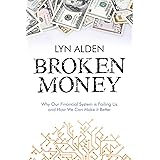Table of Contents
The Origins of Quantitative Easing Programs
Imagine you're at a party, and the music is playing softly in the background. Suddenly, the host decides to crank up the volume to get everyone on their feet and dancing. This is essentially what central banks around the world do when they implement Quantitative Easing (QE) programs to stimulate economic growth.
Quantitative Easing is a monetary policy tool used by central banks to inject money into the economy when traditional methods, like lowering interest rates, are no longer effective. This unconventional approach involves the central bank purchasing long-term securities, such as government bonds and mortgage-backed securities, from financial institutions. By doing so, the central bank increases the money supply, lowers interest rates, and encourages lending and investment.
- Quantitative Easing was first introduced by the Bank of Japan in the early 2000s to combat deflation and stimulate economic growth.
- The Federal Reserve in the United States implemented QE programs in response to the 2008 financial crisis, followed by the European Central Bank and the Bank of England.
- Canada also utilized Quantitative Easing during the global financial crisis to support the economy and stabilize financial markets.
These programs are like a shot of adrenaline for the economy, providing a much-needed boost during times of economic uncertainty and stagnation.
The Impact of Quantitative Easing on Global Growth
Now, let's dive into the nitty-gritty of how Quantitative Easing programs impact global growth. When central banks implement QE, they aim to achieve several key objectives:
- Lowering Interest Rates: By purchasing long-term securities, central banks drive down interest rates, making borrowing cheaper for businesses and consumers. This encourages spending, investment, and economic activity.
- Boosting Asset Prices: QE programs can lead to an increase in asset prices, such as stocks and real estate. This wealth effect can stimulate consumer spending and confidence, further fueling economic growth.
- Stimulating Inflation: Inflation is a key indicator of a healthy economy. Quantitative Easing aims to prevent deflation and promote moderate inflation by increasing the money supply and aggregate demand.
Let's take a closer look at the impact of Quantitative Easing on major economies:
- United States: The Federal Reserve's QE programs played a crucial role in stabilizing the U.S. economy after the 2008 financial crisis. By lowering interest rates and providing liquidity to financial markets, QE helped prevent a deeper recession and supported economic recovery.
- Europe: The European Central Bank's QE initiatives were instrumental in addressing the Eurozone debt crisis and promoting economic growth in the region. By purchasing government bonds and stimulating lending, QE helped boost confidence and investment in struggling economies like Greece and Spain.
- Canada: The Bank of Canada's QE measures during the global financial crisis helped mitigate the impact of the recession and support the country's banking system. By injecting liquidity into the economy, QE enabled businesses to access credit and consumers to continue spending.
Quantitative Easing programs have proven to be effective tools in stimulating global growth and preventing economic downturns. However, it's essential to monitor their impact carefully and ensure that they are implemented responsibly to avoid unintended consequences.
So, the next time you hear about Quantitative Easing in the news, remember that it's like turning up the volume at a party to get everyone dancing – a bold move to kickstart the economy and keep things moving in the right direction.
I'll end by saying that I'm trying my best to make these subjects understandable and straightforward. As you read, study, and explore further, keep in mind that these little writings are just the beginning. To help you out, here are a few other stories from the world of economics to help you prepare for any eventuality:












